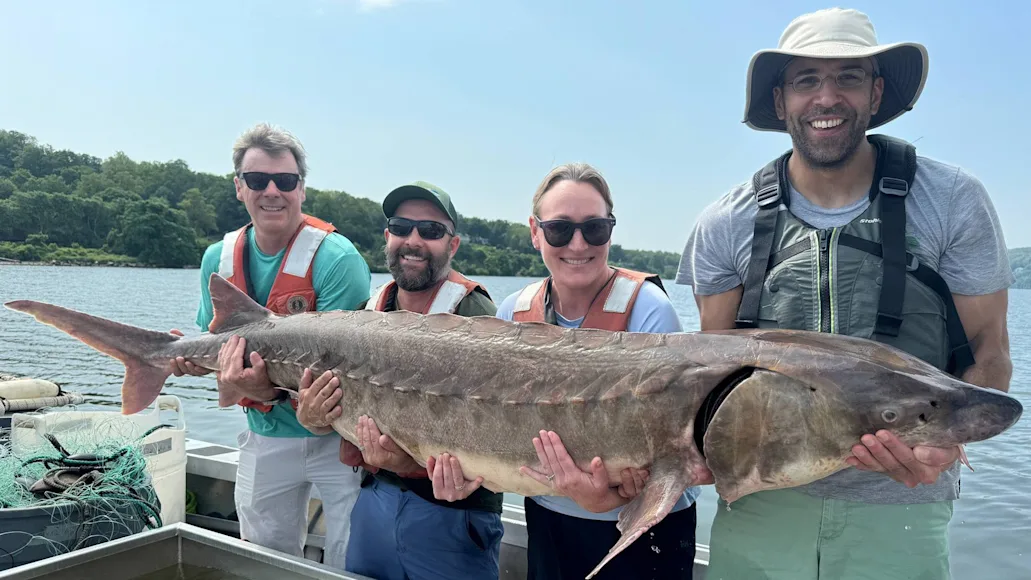A 6-foot-long endangered sturgeon weighing 220 pounds was hauled out of the Hudson River by biologists with the New York Department of Environmental Conservation’s (NYDEC) Hudson River Estuary Program in June. Captured as part of an annual survey started in 2006 to track trends in the sturgeon population, the fish was netted near Hyde Park, the former home of President Franklin Delano Roosevelt, about 80 miles north of New York City.
According to a post
on NYDEC’s Facebook page, the Atlantic sturgeon is the Hudson’s largest fish species. Atlantic sturgeon are anadromous: hatched in freshwater, they spend most of their time at sea, returning to their freshwater birthplace to spawn. Staff members who handled the 6-footer believed it to be a female that had not yet spawned. The fish was captured using a National Marine Fisheries Service endangered species research permit, and biologists measured and weighed it, clipped a piece of its fin for genetic analysis, and outfitted it with a tracking tag before releasing it back into the river.
Atlantic sturgeon were once abundant in the Hudson and other East Coast rivers from Labrador to Florida. Their roe (used to produce high-quality caviar) and their meat (once referred to as “Albany Beef”) put them in high demand in the 19th and early 20th centuries. But overfishing has reduced their numbers, and now the species is found in only 22 of their 38 historical spawning rivers. In 2012, five distinct populations of the fish were listed under the U.S. Endangered Species Act. Globally, 85 percent of all sturgeon families are at risk of extinction, leading the International Union for Conservation of Nature to label them more cr
itically endangered than any other species group on the organization’s Red List of Threatened Species.
Capable of living 60 years or more, Atlantic sturgeon can reach 16 feet long and weigh up to 800 pounds, but it takes a while: Those in the Hudson River typically don’t hit sexual maturity until 11 to 21 years old, and the females don’t reach 50 percent of their maximum lifetime egg production until 29—approximately 3 to 10 times longer than other bony fish species. Discoveries of large specimens such as this one and a 14-footer pinpointed on side-scan sonar
in 2018 in the same stretch of river give researchers hope that the species is making a comeback. Larger females produce far more eggs than younger ones—up to 8 million eggs by some estimates.
Amanda Higgs, a biologist with the Hudson River Estuary Program, told Fox News Digital
that a population survey from 2014 estimated the Hudson River sturgeon numbers at around 450. “Another population assessment is underway (three-year study period) and in its second year, so it might be a few more years before an updated number is available,” she said. “Preliminary data shows positive trends.”





